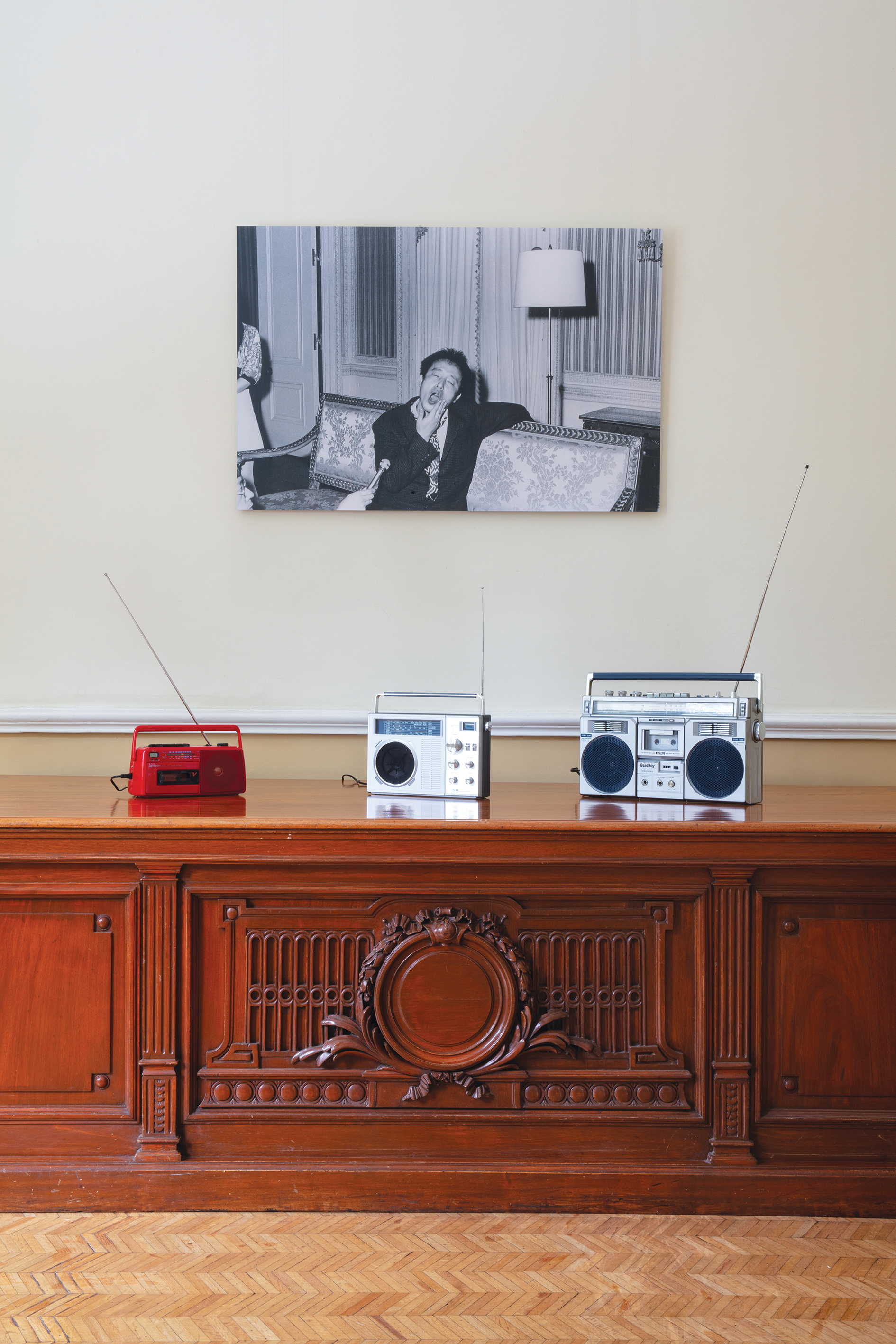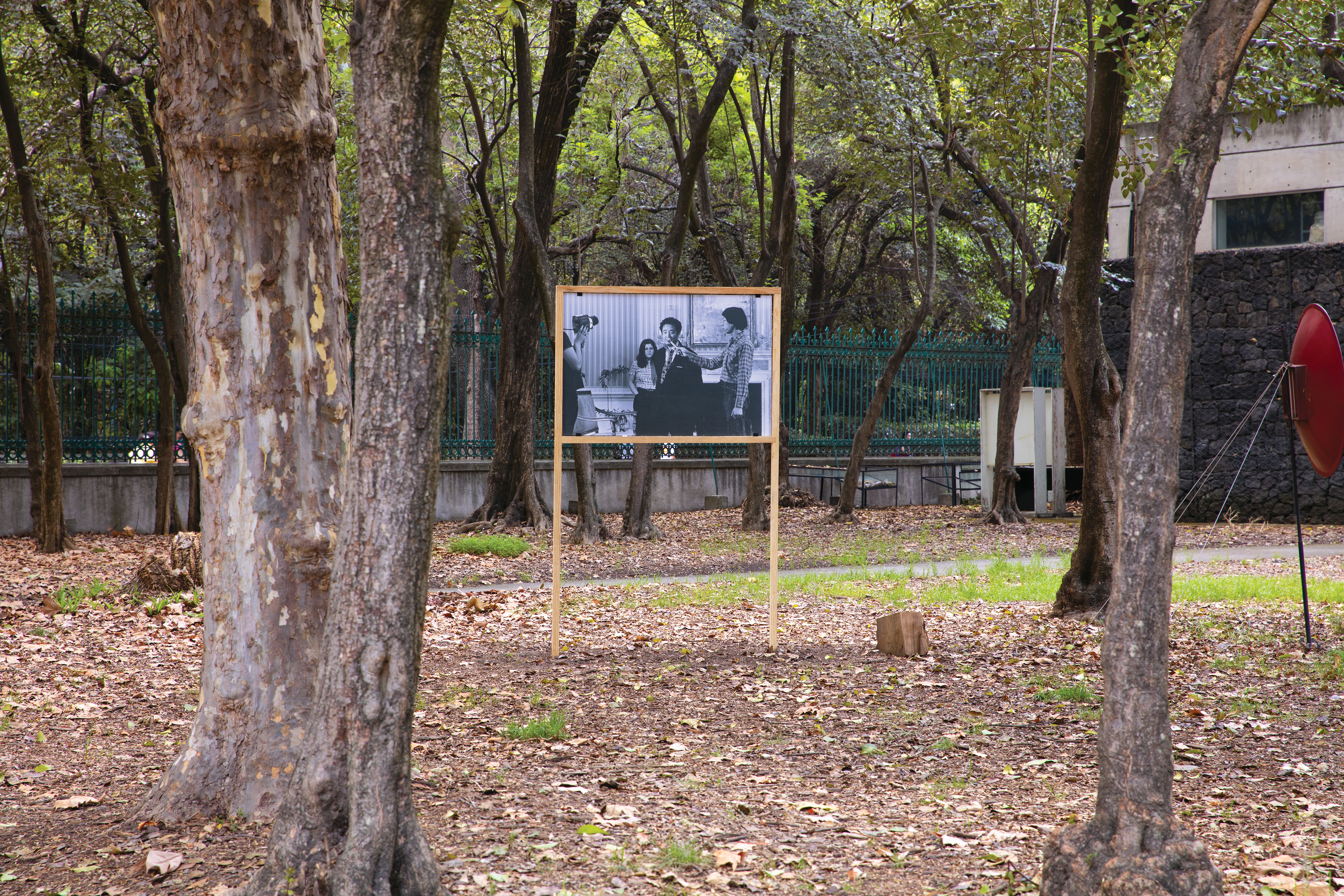Nam June’s Spirit Was Speaking To Me

Seoul Mediacity Biennale, Seoul, South Korea, 2025
Nam June’s Spirit Was Speaking To Me (2017/2022)
audio recordings, radio transmission, photos, text
Listen to the audio recordings HERE
Nam June’s Spirit Was Speaking to Me occurred purely by chance. In 2010, I was spending four days at Nam June Paik Art Center in South Korea for a series of performances and had plenty of free time to wander. The building was packed with Paik's artwork and related material. I have always felt a close kinship with him as an artist, and so it was a great opportunity to immerse myself in his works and ephemera.
It was that night I made the first contact, via a hand-held radio in a hotel room in Seoul. It was literally out of the blue. Scanning through the stations, I stumbled upon what sounded like a submerged voice and I began to record it in fascination. I concluded this was Paik's spirit reaching out to me.
The project continued to grow organically as I kept channeling Paik’s spirit over long distance and receiving cryptic broadcasts/messages. The series of séances, conducted in different cities across the globe, began in Seoul in 2010, and continued in Köln, Germany in 2012, Wrocław, Poland in 2013, and Lewisburg, USA in 2014. The original recordings were captured by the same radio which has a tape recorder, with almost no editing, save for some minimal slicing by an mastering.
Paik is known for his association with shamanism, a practice tha constantly surfaces in his works all through his career. In an interview, he stated “In Korea, diverse forms of shamanism are strongly remained. Even though I have created my work unconsciously, the most inspiring thing in my work came from Korean female shaman Mudang.” Paik himself was a master shaman and vividly used shaman rituals and symbols for staging his performances and installations.
These recordings also became a way for me to explore the mythic form of radio—a medium which is full of mysteries. The transmissions captured may be "secret broadcasts" on anonymous radio stations. There are in fact hundreds of those stations around the world, although the numbers dwindle as clandestine messages can now be sent via encrypted digital channels. Some of these stations were likely for military use or espionage or relics of the Cold War. But many others continue without apparent explanation. These are just some of the questions that remain unanswered.
The original recordings were commissioned by documenta 14, Every Time A Ear di Soun, 2017
The installation version was commisioned by Toronto Biennial of Art, 2022
Past Exhibitions
2025 Seoul Mediacity Biennale, Seoul, South Korea
The Substation, Melbourne, Australia
2023 Casa del Lago UNAM, Mexico City, Mexico
2022 Toronto Biennial of Art, Toronto, Canada
Seoul Mediacity Biennale
August 26 - November 23, 2025



Photo by Cheolki Hong
The Substation
Februry 21 - April 12, 2025



Photos by Christo Crocker
June 1 - August 30, 2023



Photos by Enrique Macías Martínez
Courtesy of Casa del Lago UNAM
Courtesy of Casa del Lago UNAM
Toronto Biennial of Art
March 26 ‒ June 5, 2022
Download the print ephemera HERE


Photos by Toni Hafkenscheid
Aki Onda’s practice communes not only with things—particularly what he calls “the rubble and ruin of old technologies”—but also with spirits. Nam June’s Spirit Was Speaking to Me is a project begun by chance. One evening during a residency in a suburb of Seoul in 2010, Aki was listening to a hand-held radio when he believed he intercepted a transmission by artist and composer Nam June Paik. For Aki, it was an invitation to begin to work together, to conjure new music via the radio waves. It made sense that Nam June chose that moment to communicate: at the time, Aki was immersed in the late artist’s artworks and archival materials in South Korea. Over the next few years, they continued their communications in different cities around the world, with recordings made in Cologne, Germany in 2012, Wrocław, Poland in 2013, Lewisburg, USA in 2014, and Toronto in 2022.
Nam June frequently cited traditional belief systems and symbols in his work. Invested in the transformative potential of ceremony and ritual, these became the ideological and spiritual basis to stage his installations and performances. Imprecisely called “shamanism” in English (each of these ceremonies and practices has its own specific name), for Nam June, these traditions were a way to frame his collaborations with new media: televisions, projectors, tube amplifiers, film, video, and so on. For Nam June, technology had a spirit that could be conjured through such actions as generating a wavering spectre of light from a TV screen by the force of a strong magnet or creating a strange cello from a stack of monitors, complete with a base and a wooden neck, played by a single amplified string. Aki carries on this tradition in his own work, collaborating both with the spirits of old technologies and the spirits of his mentors.
Music also links the two artists. Nam June began his career as a classical pianist and only began creating art after studying musicology, in particular Arnold Schoenberg and the twelve-tone technique. Shortly after, as part of what Nam June came to call “action music,” he jumped up from the crowd and cut off John Cage’s tie mid-performance. In doing so, he ruptured the presumed boundary between audience and performer. Aki’s work takes this further by positing that the “performer” need not be human, and the audience is found not only among the living but also with the spirit of the dead. In this way, media is never truly obsolete—it simply communicates otherwise.
Text by Candice Hopkins